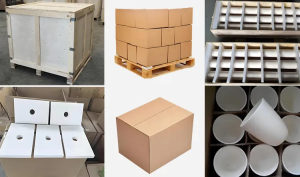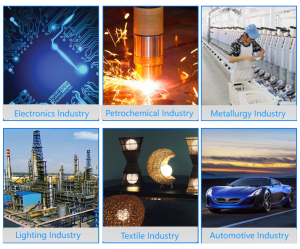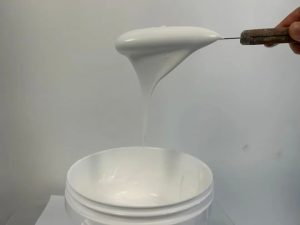Professional industry ceramic supplier, silicon nitride, silicon carbide, aluminum nitride and any other kinds of ceramics.
1. Introduction
In the past 48 hours, global demand for high-performance refractory materials has surged due to expanded semiconductor manufacturing and clean energy initiatives. A recent report by MarketsandMarkets (June 2024) notes that the advanced ceramics market—particularly silicon carbide components—is projected to exceed $15 billion by 2028, driven by applications in electric vehicles, aerospace, and metallurgy. At the heart of this growth lies a workhorse material: the silicon carbide crucible.

Silicon carbide crucibles are essential in labs and foundries alike, prized for their ability to withstand extreme temperatures, resist chemical corrosion, and maintain structural integrity under thermal shock. But what makes them so special—and how do they stack up against other advanced ceramics like silicon nitride or boron carbide? Let’s dive in.
2. What Is a Silicon Carbide Crucible?
A silicon carbide crucible is a container made from silicon carbide (SiC), an advanced ceramic known for its hardness, thermal conductivity, and stability at high temperatures. These crucibles are commonly used to melt and hold metals like aluminum, copper, and precious alloys without contaminating the melt or deforming under heat.
Unlike traditional clay-graphite crucibles, silicon carbide crucibles offer superior resistance to oxidation and longer service life—especially in continuous high-temperature operations above 1,400°C (2,550°F). They’re sintered or reaction-bonded (RBSiC) to achieve dense, robust structures ideal for demanding environments.
3. Key Properties and Advantages
- Exceptional thermal shock resistance
- High thermal conductivity (faster, more uniform heating)
- Excellent chemical inertness (resists slag, fluxes, and molten metals)
- Mechanical strength even at elevated temperatures
- Long operational lifespan compared to alumina or graphite alternatives
These traits make silicon carbide crucibles indispensable in foundries, jewelry casting, and research laboratories where purity and repeatability matter.
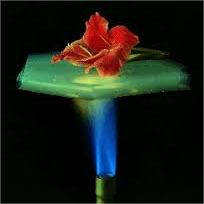
4. Silicon Carbide vs. Other Advanced Ceramics
When choosing a crucible material, engineers often compare silicon carbide with zirconia, alumina (Al2O3), and silicon nitride (Si3N4).
Zirconia crucibles offer higher melting points but are more brittle and expensive. Alumina crucibles are cost-effective but less thermally conductive and prone to cracking under rapid temperature changes. Meanwhile, silicon nitride crucibles—produced by specialized silicon nitride crucible factories—are valued for their toughness and oxidation resistance but lack the thermal conductivity of SiC.
The debate between boron carbide vs silicon carbide is also relevant in armor and abrasive applications, but for crucibles, silicon carbide remains dominant due to better manufacturability and cost efficiency.
5. Beyond Crucibles: The Versatility of Silicon Carbide Ceramics
Silicon carbide isn’t just for crucibles—it’s used across countless high-performance products:
- RBSiC silicon carbide tile blocks and silicon carbide ceramic tiles for kiln linings
- Silicon carbide ceramic columns and pillars for structural support in furnaces
- Silicon carbide burner nozzles and silicon carbide bricks for combustion systems
- Silicon carbide tubes and thermocouple protection tubes for high-temp sensing
- Even consumer goods like silicon carbide ceramic baking dishes, dinner plates, and butter dishes—though these are typically decorative or niche due to cost
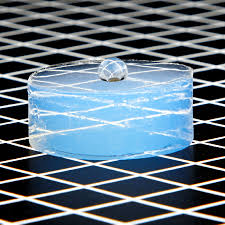
Note: While terms like ‘silicon carbide ceramic dinnerware’ or ‘silicon carbide baking dish Staub’ appear in searches, most kitchenware labeled as such is actually stoneware or porcelain with a SiC-inspired finish—not true silicon carbide, which is too expensive and hard for everyday tableware.
6. Industrial and Technical Applications
In heavy industry, silicon carbide ceramic piping, tubes, and porous ceramic filters handle corrosive fluids and gases at high temperatures. Silicon carbide discs—whether grinding, sanding, or piezoelectric—are vital in precision machining and electronics.
Custom components like silicon carbide rings, ceramic disc taps, and furnace rollers (including fused silica variants) showcase the material’s adaptability. For instance, RBSiC ceramic pillars are increasingly used in glass manufacturing nozzles due to their wear resistance.
Meanwhile, advanced ceramics companies are exploring hybrid systems—like silicon carbide–zirconia tubes—to balance cost, strength, and thermal performance.
7. Manufacturing and Market Trends
Most silicon carbide crucibles are made via reaction bonding (RBSiC) or pressureless sintering. RBSiC offers near-net-shape capability and excellent strength, while sintered SiC provides higher purity for semiconductor or lab use.
The high purity silicon nitride powder market is growing in parallel, supporting demand for silicon nitride rings, plates, and custom heat shields—but silicon carbide remains the go-to for thermal-heavy applications.
Globally, manufacturers in China, Germany, and the U.S. lead production, with increasing focus on sustainability and energy-efficient sintering techniques.
8. Conclusion
Silicon carbide crucibles represent the gold standard in high-temperature containment, blending durability, efficiency, and reliability. While alternatives like silicon nitride or zirconia serve specific niches, silicon carbide’s unmatched thermal conductivity and robustness ensure its dominance across metallurgy, research, and advanced manufacturing. As industries push toward higher operating temperatures and cleaner processes, the role of silicon carbide—and advanced ceramics as a whole—will only expand.
Our Website founded on October 17, 2012, is a high-tech enterprise committed to the research and development, production, processing, sales and technical services of ceramic relative materials such as Silicon. Our products includes but not limited to Boron Carbide Ceramic Products, Boron Nitride Ceramic Products, Silicon Carbide Ceramic Products, Silicon Nitride Ceramic Products, Zirconium Dioxide Ceramic Products, etc. If you are interested, please feel free to contact us.


